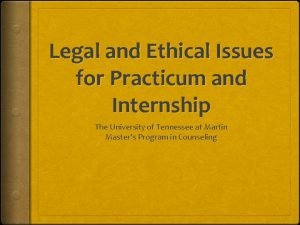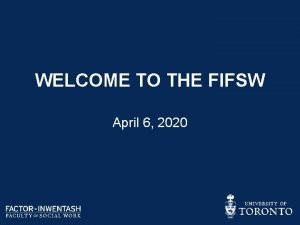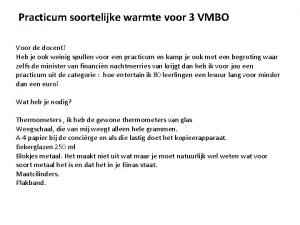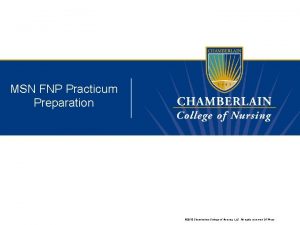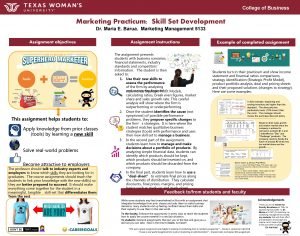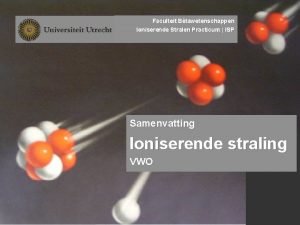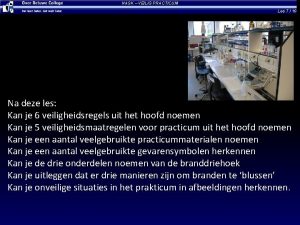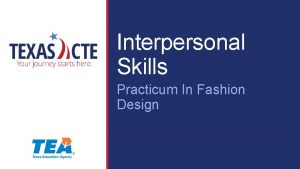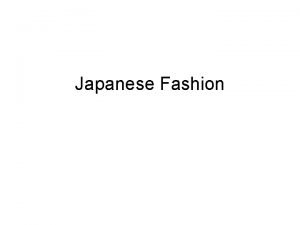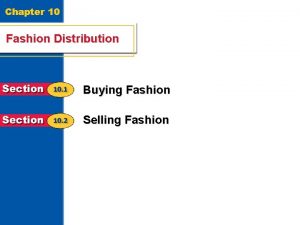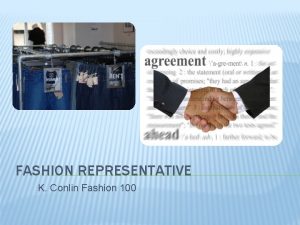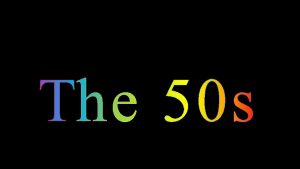Management Practicum in Fashion Design Copyright Texas Education












- Slides: 12

Management Practicum in Fashion Design

Copyright © Texas Education Agency, 2017. These Materials are copyrighted © and trademarked ™ as the property of the Texas Education Agency (TEA) and may not be reproduced without the express written permission of TEA, except under the following conditions: 1) Texas public school districts, charter schools, and Education Service Centers may reproduce and use copies of the Materials and Related Materials for the districts’ and schools’ educational use without obtaining permission from TEA. 2) Residents of the state of Texas may reproduce and use copies of the Materials and Related Materials for individual personal use only, without obtaining written permission of TEA. 3) Any portion reproduced must be reproduced in its entirety and remain unedited, unaltered and unchanged in any way. 4) No monetary charge can be made for the reproduced materials or any document containing them; however, a reasonable charge to cover only the cost of reproduction and distribution may be charged. Private entities or persons located in Texas that are not Texas public school districts, Texas Education Service Centers, or Texas charter schools or any entity, whether public or private, educational or non-educational, located outside the state of Texas MUST obtain written approval from TEA and will be required to enter into a license agreement that may involve the payment of a licensing fee or a royalty. For information contact: Office of Copyrights, Trademarks, License Agreements, and Royalties, Texas Education Agency, 1701 N. Congress Ave. , Austin, TX 78701 -1494; phone 512 -463 -7004; email: copyrights@tea. state. tx. us. Copyright © Texas Education Agency, 2017. All rights reserved. 2

Objectives • Discuss the difference between traditional and horizontal organization • Identify the three levels of management • Theorize how a self-managing team functions • Defend the importance of management • Evaluate the five functions of management Copyright © Texas Education Agency, 2017. All rights reserved. 3

Terminology • Vertical Organization: Top to bottom management structure of an organization (consists of top, middle, and supervisory levels) • Top Management: Makes decisions affecting entire company; decisions have broadest effect on the company • Middle Management: Implements the decisions of top management; plans ways to implement foals; communicates with supervisory level management • Supervisory Level Management: Supervises the activities of employees; carries out the instructions of middle and top management; assigns tasks and evaluates performance employees • Horizontal Organization: Self-Managing teams set their own goals and make their own decisions. Organized by process instead of function • Empowerment: Encourages team members’ contributions and willingness to take responsibility Copyright © Texas Education Agency, 2017. All rights reserved. 4

• Managing: Completing the work of an organization through its people and resources • Organizing: Bringing people, activities and resources together for the benefit of the company • Staffing: Matching workers with the tasks to be done • Controlling: Measuring performance; comparing performance with company objectives and goals for an effective outcome • Long-Range Planning: Information is gathered analyzed, serving goals ranging from one to five years; or five to ten years • Short-Term Planning: Specific objectives are identified for implementation of one year or less. Usually evaluated on quarterly or semi-annual basis Copyright © Texas Education Agency, 2017. All rights reserved. 5

Management Structures: • • Vertical Organization • Manager performs particular department function well. • Top management • Middle management • Supervisory Level Vertical Organization • Became popular due to downsizing in the 1980 s and 1990 s. • Self-management teams set their own goal and make their own decisions. • Customer-Oriented • Adopted by most _________ manufacturers. Copyright © Texas Education Agency, 2017. All rights reserved. 6

Management Functions • • • Planning • Long range • Short term Organizing • Arrange staff to accomplish goals • Organizational chart • Controlling • Performance is measured and compared with goals • Setting standards/areas of improvement Staffing • • Recruit and hire; train; evaluate performance Leading • Communicate direction of business, commitment, motivation, drive Copyright © Texas Education Agency, 2017. All rights reserved. 7

Management Styles Autocratic: Makes decisions with virtually no input “My way or the highway” Chaotic: Allows employees to make all decisions; can be a “circus” Consultative: Gets feedback and adjusts when necessary; can be slow; advisory board can be helpful Copyright © Texas Education Agency, 2017. All rights reserved. 8

Management Styles Democratic: Allows majority rule, sometimes slow process, slow process but easier to get employees’ approval Laissezfaire: Manager acts as a mentor’ allows employees some control. Focus on results, not how work gets done. Persuasive: Makes decision, then takes time to convince employees it was good. Spends time getting people to “buy in” Copyright © Texas Education Agency, 2017. All rights reserved. 9

An Effective Manager • Shows a “Happy Face” • It’s okay to smile! It’s contagious! • Cares about others • Encourages and looks for the good in others • Says “thank you” • Is considerate • Takes interest • Listens • Asks questions • Recalls information • Encourages interaction • Does not gossip • Treats everyone equally • Is a team player • Is trustworthy • Calls people by their names • Recognizes birthdays, anniversaries, etc. Copyright © Texas Education Agency, 2017. All rights reserved. 10

An Effective Manager • Handles disagreements quickly • Timing must be appropriate and fairly • Is empathetic • Resolves conflict • Walks in “another’s shoes” easily • Communicates clearly • Written • Oral • Appreciates humor at appropriate times • Isn’t negative and doesn’t whine • Sets a good example • Isn’t a “cry baby” • Humor alleviates stress Copyright © Texas Education Agency, 2017. All rights reserved. 11

An Effective Manager Also: • Is able to give clear directions • Has skills to train employees adequately • Has vision • Is consistent and fair and firm • Acts as a good example • Delegates responsibilities • Fosters initiative Copyright © Texas Education Agency, 2017. All rights reserved. 12

